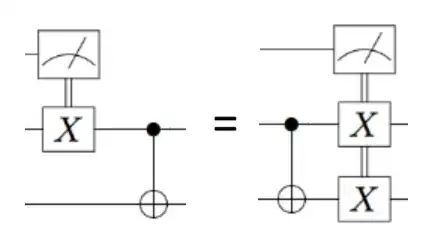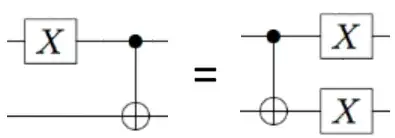I am doing some Quantum Computing Exercises and I am curious on how you go from left to right in this picture...
I see not only how the c-not moves but also a new bond between X gates in second and third qubit..
I have been trying to find the equalities used but it's hard... does someone know the step by step on how to go from the left circuit to the right?


